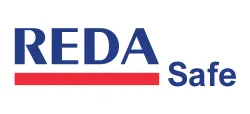The Significance of Effective Communication in Workplace Safety

Key Takeaways
Clear and effective communication can improve your workplace's safety culture.
Introduction
In a Forbes Advisor survey, nearly half of all employees reported that bad communication hampers their work performance and happiness.
But the problems caused by ineffective communication extend beyond just productivity. It plays a crucial role in ensuring the safety of employees, particularly in industries like manufacturing and industrial work.
This post will explore the importance of good communication and how it can lead to safer work environments.
Creating a Strong Safety Culture with Open Communication
Open and honest communication is key to fostering a solid safety culture at work.
For workers to put safety first and make choices that keep everyone safe, they need a clear picture of what safety means in their specific setting. For example, how should they use their equipment correctly? Who should they inform if equipment breaks down or shows signs of wear? What's the schedule for machinery checks or maintenance, and who is responsible for it?
It's also crucial for employees to feel safe speaking up about safety issues, both with their peers and superiors. If they fear negative consequences for mentioning a problem, they might stay silent, endangering themselves, their coworkers, and even the entire business.
Enhancing Safety with Immediate Hazard Reporting
Immediate reporting of hazards is essential for tackling safety issues effectively. This approach not only improves communication but also promotes transparency in the workplace. Let's discuss ways to make this happen.
Emphasizing the Need to Report Safety Concerns
It's essential that every employee knows exactly which issues they should report.
There are times when staff might spot something unusual but aren't sure if it's significant enough to report. This hesitation can lead to minor problems escalating into serious, dangerous situations.
To counter this, it's important to clearly outline and communicate the specific types of situations that need immediate reporting. Examples include equipment showing signs of wear, like frayed electrical cords, scaffolding that's not been set up correctly, or any incidents of falling, even if no injuries are immediately evident.
Moreover, employees should grasp the significance of incident reporting. It’s more than just knowing whom to alert or which paperwork to complete. They should understand that by reporting these issues promptly, they're initiating a process to resolve these problems quickly, thereby safeguarding their fellow workers from potential harm.
Making the Reporting Process Clear
Along with understanding what needs to be reported, it's just as important for employees to know who they should report to.
Who makes up the chain of command in your business? Are there specific supervisors for floor workers to report to? Or is it more appropriate to report directly to a floor manager? Perhaps, some issues need to be addressed directly with the safety department?
It's crucial to outline this chain of command clearly and ensure that all employees are informed. This eliminates confusion and guesswork, making it easier for staff to know exactly who to turn to if something isn't right.
Simplifying Communication with Helpful Tools
High-stress situations can arise when things go wrong, leading employees to feel overwhelmed—particularly if they're reporting an issue for the first time.
To reduce confusion and boost confidence, offer tools and resources that simplify the process of communicating and reporting safety concerns. For instance, provide access to pre-written email templates for reporting various types of issues, or organize short training sessions to guide employees through how to report effectively.
Leveraging Tech for Quicker Safety Communication
Utilizing technology like email, messaging apps, online safety platforms, and electronic signs can significantly speed up and improve communication. Think about adding these technological tools to your workplace to enhance connectivity among everyone.
Improving Safety Through Effective Training
Good training helps employees communicate better in emergencies and teaches them vital safety practices to avoid problems from the start. This is crucial whether you're focusing on manufacturing safety, protecting solo workers, or any other safety concern. Training is key.
Here are some tips for setting up stronger safety training at your company.
1- Schedule Frequent Training Sessions
People remember information better when they hear it several times. That's why one of the most effective strategies is to conduct training sessions more often.
Try to bring everyone together at least twice a year to go over safety rules, talk about any updates, clear up who is in charge of what, and make sure everyone knows what they should be doing.
2- Ensure Training is Required
Making training sessions compulsory is crucial. Involving everyone ensures future mistakes are minimized and keeps all staff informed about any changes in procedures. This approach also highlights the significance of safety training, fostering a culture that prioritizes safety.
3- Encourage Questions and Feedback During Training
Training becomes more effective when it's interactive. Rather than lecturing your employees, turn these sessions into a dialogue where everyone participates.
Encourage team members to ask questions, offer feedback, and share their own experiences. Engaging employees in this way not only helps them remember the information better but also fosters support for safety practices.
4- Use Visual Cues as Reminders
Even well-trained employees appreciate reminders now and then.
Place posters or electronic displays around the workplace to point out easily overlooked hazards, remind employees about the necessary personal protective equipment (PPE), or offer a quick checklist for end-of-shift routines.
Sharing information in several languages and including images can make these messages more accessible to everyone, removing obstacles like language differences, varying literacy levels, or time pressures.
Concluding
Clear and open communication is crucial for maintaining a safe, efficient, and positive workplace. By implementing the advice and strategies outlined above, you can enhance communication among your team members, paving the way for their ongoing success and safety.
